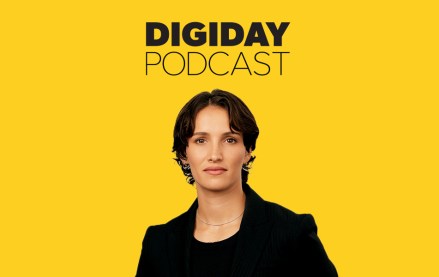Connect with execs from The New York Times, TIME, Dotdash Meredith and many more

Subscribe: Apple Podcasts • Spotify
The 25-year-old fashion, entertainment and culture publication Nylon went digital-only in 2017, but owner BDG is officially reviving the print magazine this year — albeit biannually.
Debuting with a limited 50,000-issue run, the magazine will be distributed on newsstands, in the lobbies of high end boutiques, hotels and airport lounges and at Nylon House events, vs. being available via subscriptions, according to Emma Rosenblum, chief content officer at BDG. But that number and distribution model could change based on the reception from readers and advertisers alike, she added.
And so far, the advertiser reception has been better than expected, with the premier issue featuring several ad pages. Rosenblum said that she was willing to put out the first relaunched issue of Nylon without any advertisers signing on, just to get a proof of concept in order. But with the sales team already up to snuff on selling a print product thanks to six-times-per year W magazine, securing ad revenue was possible before the first issue went to print.
On the latest episode of the Digiday Podcast, Rosenblum discusses the highs and lows of making a print product and why Nylon was the first brand within her remit to have a physical iteration.
Pitching print to advertisers
It had always been floated to certain clients, “if there was Nylon print, would you be interested?” And I think it’s so difficult to get people to buy something without having them be able to hold it in their hands first, right? So for this first initial issue, we’re like, okay, even if we get zero advertising, we have to do it, because there has to be a proof of concept.
We have another proof of concept in our company [W magazine] that we can produce beautiful print products so we were able to get a number of advertisers to buy in [to the first issue of Nylon in print] without seeing anything. … So we have advertisers like Marc Jacobs, Jimmy Choo, Kate Spade, Omega, amongst others, and we have a pretty healthy ad page count in this first magazine … now that we have the actual product to show around, it’s just going to grow exponentially.
Additive revenue stream
Is it a super profitable endeavor? No, it’s an expensive thing to produce. Everybody knows, this is why print has been on the decline for the past 10 years. It’s money, it’s care, it’s time, it’s staff. I mean, these photoshoots are huge productions and costly. And you can see the result because they look amazing, but it’s not like they’re made for free. I think we have a really great model in that we are digital native, we started that way, we have all of our amazing sites. And then we can add these products on so that they are additional revenue, rather than our company being based around them, which is obviously not a sustainable business as we see all these other companies kind of flailing trying to cut down their print because it just costs too much.
Why Nylon?
Particularly for a brand like Nylon, which is smaller than, say a Bustle in terms of the amount of stories that it’s producing, in terms of the size of the staff — it’s not our huge content generator. It’s more one of our niche brands.
[But] think about the brands in the ecosphere that have successfully translated to print in this world, vs. the ones that have shut down. Think about Glamour, think about InStyle, think about the brands that sort of align more with Bustle in terms of the general interest audience. They’re not in print anymore because nobody could really figure out how to take that service model of like, “Here’s how you put on your lipstick,” … that is content that [audiences] would never go to a magazine for [like] they used to. So those print products really [can’t] figure out how to exist right now, but the ones that still exist are the ones that really are leaning into a very specific audience, feel more niche, feel more visual.
More in Podcasts

‘Embrace your chaos’: How creator Brandon Edelman is trying to plan for the future
While creators are now key to marketing budgets, their longevity in the fast-paced digital world is a pressing concern. This episode explores how TikToker Brandon Edelman is navigating that challenge, building a sustainable career by diversifying his content and focusing on brand partnerships.

Michelle Khare on building Emmy-worthy content — one challenge at a time
Michelle Khare’s not just taking on wild YouTube challenges — she’s eyeing an Emmy while she’s at it. Tune in for a peek behind the curtain at how she’s leveling up creator content.

How TikTok’s ‘The Secret Lives of Mormon Wives’ landed on Hulu, with Select Management Group’s Danielle Pistotnik
The talent manager and executive producer of “The Secret Lives of Mormon Wives” joined the Digiday Podcast to break down the process of the reality show finding a home on Hulu.








